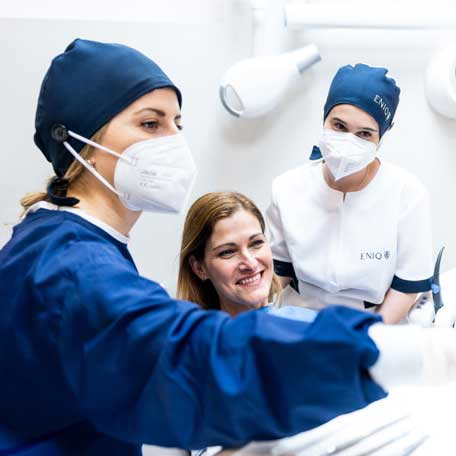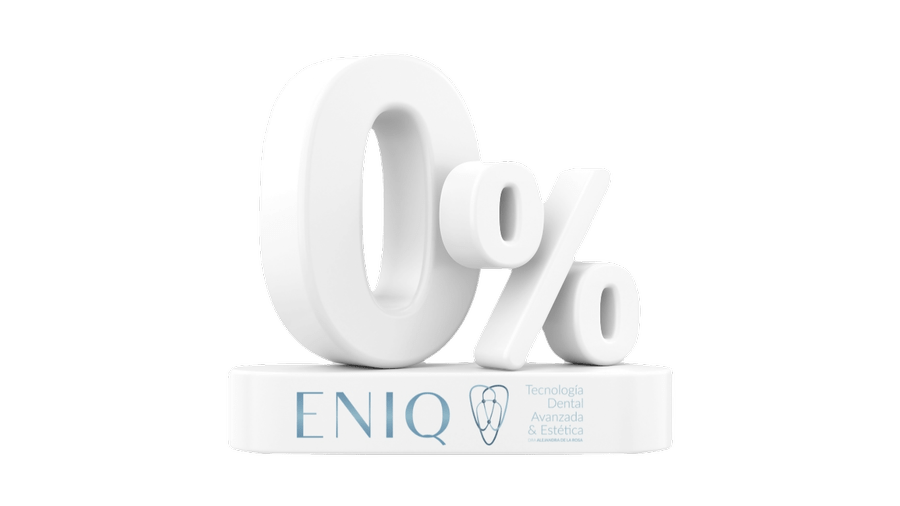

Sleep Apnea Splint
Improve your rest and health with effective treatments.
What are the signs of sleep apnea?
The symptoms of sleep apnea can vary from person to person, but some common symptoms include:
- Loud and frequent snoring: Snoring is one of the most characteristic signs of sleep apnea. These snores are usually loud, intermittent, and may be accompanied by breathing pauses.
- Breathing pauses during sleep: People with sleep apnea may experience brief and repeated breathing pauses during the night. These pauses occur when the airway is obstructed and airflow is interrupted.
- Excessive daytime sleepiness: Due to frequent awakenings during the night, people with sleep apnea often feel excessively sleepy during the day. They may have difficulty staying awake, concentrating, and carrying out daily activities.
- Fatigue and tiredness: Despite sleeping at night, people with sleep apnea may wake up feeling tired and fatigued. This is due to the disruption of restorative sleep.
- Attention and concentration problems: The lack of quality sleep can affect cognitive function and make concentration, memory, and attention difficult.
- Dry mouth or sore throat upon waking: Breathing pauses during the night can cause dryness in the mouth and sore throat upon waking.
- Morning headaches: People with sleep apnea may experience frequent headaches upon waking, especially in the morning.
- Mood changes and irritability: The lack of restorative sleep can affect mood, causing irritability, mood swings, and emotional difficulties.
It's important to note that not all people with sleep apnea exhibit all the symptoms mentioned above. If you suspect you may have sleep apnea, it's advisable to seek an evaluation and diagnosis from a sleep disorder specialist to receive appropriate treatment.
What are the plates or splints used to treat sleep apnea or mandibular advancement splints?
The plates or splints for sleep apnea are oral devices designed to treat obstructive sleep apnea (OSA) and snoring. These splints are similar to anti-snoring splints but are specially designed to help keep the upper airways open during sleep and prevent episodes of obstruction. The plates or splints for apnea work by mandibular positioning. They are placed in the mouth at night and adjust the position of the jaw and tongue to keep the airway open. By advancing the jaw forward, the collapse of the throat structures is prevented, and airflow is improved during sleep. These splints are custom-made and tailored to fit the patient's mouth and teeth. They are usually made of durable plastic materials that are safe for oral use. It is important to note that plates or splints for apnea should be prescribed and fitted by a dental health professional or a sleep disorder specialist. A specialist will evaluate the degree of sleep apnea and design the splint customized for each patient. Additionally, regular follow-up is required to ensure that the splint fits properly and is effective in treating sleep apnea. It is advisable to consult with a professional to determine if a plate or splint for sleep apnea is suitable for your case and to receive appropriate care and follow-up.Procedure
What is the Process for the Installation of a Splint in the Treatment of Sleep Apnea?
The procedure for placing a splint for sleep apnea can vary depending on the type of splint and the specific needs of each patient.
Below is a general procedure that is followed in many cases:

- Evaluation and diagnosis: The first step is to perform a complete evaluation of sleep apnea and determine if a splint is the appropriate treatment. This usually involves a consultation with a sleep disorder specialist or a dentist experienced in treating apnea.
- Impression taking: Once it has been decided to use a splint, impressions of the patient's mouth will be taken. This involves taking molds or impressions of the teeth and the structure of the mouth to obtain a customized splint.
- Design and manufacturing: The molds or impressions are sent to a dental lab where the splint will be designed and manufactured. Durable and safe plastic materials for oral use will be used.
- Fitting and testing: Once the splint is ready, an appointment will be scheduled for its fitting and testing. The specialist or dentist will make the necessary adjustments to ensure that the splint fits correctly and is comfortable for the patient.
- Usage instructions: The specialist or dentist will provide detailed instructions on how to properly place and use the splint. This may include directions on jaw position and how to adjust the splint for the best results.
- Follow-up: It's important to schedule follow-up appointments with the specialist to evaluate the effectiveness of the splint and make additional adjustments if necessary. This ensures that the splint is functioning properly and the sleep apnea treatment is being properly monitored.
It is essential to follow the specialist's instructions and maintain open communication throughout the process to ensure the success of the treatment with the splint for sleep apnea.
What is the benefit of undergoing the anti-snoring splint treatment at ENIQ?
The placement of a splint for sleep apnea can provide several advantages and benefits for those who use it. Some of the most common advantages include:
- Improvement of sleep apnea symptoms: The splint helps to keep the airways open during sleep, which facilitates breathing and reduces or eliminates snoring and breathing pauses.
- Improvement in sleep quality: By keeping the airways clear, the splint allows for deeper and more restorative sleep. This can help reduce excessive daytime sleepiness and improve energy and alertness during the day.
- Reduction of associated health problems: Untreated sleep apnea can increase the risk of developing serious health problems, such as cardiovascular diseases, high blood pressure, diabetes, and strokes. The use of the splint can reduce these risks by improving sleep quality and maintaining adequate oxygenation at night.
- Improvement in quality of life: By alleviating sleep apnea symptoms and improving sleep quality, the splint can have a positive impact on overall quality of life. Those who use the splint may experience increased energy, better concentration, and a reduction in associated health issues, allowing them to lead a more active and healthy life.
- Comfort and ease of use: Splints for apnea are usually comfortable to wear and easy to place. They are customized and fit the patient's mouth, making them more comfortable than other devices used to treat sleep apnea.
It is important to note that the benefits of the splint can vary from person to person, and the effectiveness of the splint may depend on the severity of the sleep apnea and other individual conditions. It is advisable to consult with a sleep disorder specialist to assess the viability and effectiveness of the splint in each case.
+70%
What is the success rate of anti-snoring splints?
The success rate of splints for sleep apnea can vary depending on several factors, such as the severity of the apnea, adherence and compliance with the treatment by the patient, as well as the proper adaptation and fit of the splint.
In general, oral splints are considered to have a moderate to high success rate in treating mild to moderate sleep apnea, especially when used in appropriately selected patients. It is estimated that around 60% to 70% of patients experience significant improvement in symptoms and sleep quality with the use of splints.
However, it is important to note that the effectiveness of splints can vary between individuals. Some patients may experience complete symptom relief, while others may have partial improvement or not respond adequately to treatment. Proper patient selection and customization of the splint are key factors for achieving successful outcomes.
It is advisable for patients to be evaluated and closely followed by a sleep disorder specialist, who will determine the suitability of the splint and make necessary adjustments to ensure its efficacy. In addition, adherence to follow-up visits and consistent and proper use of the splint are recommended to achieve the best results.
Our experience and opinion on anti-snoring splints
Our clinical experience with the placement of splints for sleep apnea aligns with the success rate we mention, which is why we consider it worth trying this type of treatment just for the improvement in quality of life it provides for the patient.
What is the price of a sleep apnea splint?
The price of a sleep apnea splint in Spain usually ranges between 500€ and 700€, varying depending on the type of splint, the necessary customization, and the professional performing the treatment.

- Financing: Up to 24 months without interest. Up to 60 months with preferential conditions.
- Payment breakdown: Pay monthly in comfortable installments for the treatment.
- Discount for early payment: Paying the entire treatment upfront.
- Multiple payment options: Direct debit, credit card, cash, transfer, Apple Pay, Google Pay, and Bizum.
Sleep Apnea Splint
Sleep Quality
*subject to specialist evaluation
-
All-inclusive
-
Interest-free financing
Frequently Asked Questions
Do you have more questions about sleep apnea splints?
Only two. One for the recording and digital capture, and the other for the placement of the splint.
Yes, they are generally comfortable as they are personalized to fit each patient's mouth.
It should be regularly cleaned with a soft brush and a specific cleaner for oral devices, avoiding abrasive products.
